Nout
« Le ciel septentrional ghr.t et le ciel mĂ©ridional gb.t »
ENiM 2, 2009, p. 53-58.
 Cette brève note lexicographique concerne le terme ghr.t, attesté par quelques
exemples provenant des temples gréco-romains de la région thébaine et par le P. Carlsberg I,
qui conduit à une traduction plus précise : « voûte céleste septentrionale ».
Cette brève note lexicographique concerne le terme ghr.t, attesté par quelques
exemples provenant des temples gréco-romains de la région thébaine et par le P. Carlsberg I,
qui conduit à une traduction plus précise : « voûte céleste septentrionale ».
 The subject of this short lexicographical note concerns the word ghr.t, attested in few
examples from the graeco-roman temples of the Theban area and in the P. Carlsberg I, which
leads to the most accurate translation “Northerly sky vault”.
The subject of this short lexicographical note concerns the word ghr.t, attested in few
examples from the graeco-roman temples of the Theban area and in the P. Carlsberg I, which
leads to the most accurate translation “Northerly sky vault”.
 Consulter cet article (57196) -
Consulter cet article (57196) -  Télécharger cet article au format pdf (30380)
Télécharger cet article au format pdf (30380)
« Le cercueil de Peniou. MusĂ©e national d’Histoire naturelle de Santiago du Chili (no inv. 11.160) »
ENiM 2, 2009, p. 109-128.
 L’analyse du cercueil de Pȝ-n(y)-jw (XXXe dyn. – dĂ©but de l’époque ptolĂ©maĂŻque ; MusĂ©e d’histoire naturelle de Santiago du Chili – MNHN 11.160) permet de mettre en lumière l’emploi d’une boiserie en trompe-l’œil originale et son rapport avec diffĂ©rents motifs religieux, notamment deux figures d’Anubis anthropomorphe adoptant la posture ksw.
L’analyse du cercueil de Pȝ-n(y)-jw (XXXe dyn. – dĂ©but de l’époque ptolĂ©maĂŻque ; MusĂ©e d’histoire naturelle de Santiago du Chili – MNHN 11.160) permet de mettre en lumière l’emploi d’une boiserie en trompe-l’œil originale et son rapport avec diffĂ©rents motifs religieux, notamment deux figures d’Anubis anthropomorphe adoptant la posture ksw.
 The analysis of the Pȝ-n(y)-jw’s coffin (Dynasty 30 – Ptolemaic Period; Museo Nacional de Historia Natural, Santiago of Chile – MNHN 11.160) allows to throw a light on the use of an original woodwork in trompe l’oeil and his relationship with various religious motives, specially two anthropomorphic Anubis in the ksw posture.
The analysis of the Pȝ-n(y)-jw’s coffin (Dynasty 30 – Ptolemaic Period; Museo Nacional de Historia Natural, Santiago of Chile – MNHN 11.160) allows to throw a light on the use of an original woodwork in trompe l’oeil and his relationship with various religious motives, specially two anthropomorphic Anubis in the ksw posture.
 Consulter cet article (61978) -
Consulter cet article (61978) -  Télécharger cet article au format pdf (29268)
Télécharger cet article au format pdf (29268)
« Le ciel de SinouhĂ© et l’apaisement de SĂ©sostris »
ENiM 6, 2013, p. 79-91.
 Analyse d’un thème littéraire – le ciel de Sinouhé –, thématisé à plusieurs endroits du conte de Sinouhé.
Analyse d’un thème littéraire – le ciel de Sinouhé –, thématisé à plusieurs endroits du conte de Sinouhé.
 Analysis of a literary theme – the sky of Sinuhe –, thematized in several places of the tale of Sinuhe.
Analysis of a literary theme – the sky of Sinuhe –, thematized in several places of the tale of Sinuhe.
 Consulter cet article (52363) -
Consulter cet article (52363) -  Télécharger cet article au format pdf (28545)
Télécharger cet article au format pdf (28545)
« Le dĂ©but du Livre de Nout »
ENiM 7, 2014, p. 79-123.
 Sur le plafond du cénotaphe de Sethi Ier à Abydos, le Livre de Nout est précédé de colonnes de hiéroglyphes surmontées de vignettes. L’ensemble a été désigné comme « Texte de l’Horloge » parce que ces écrits donnent la description d’une horloge à ombre accompagnée d’explications sur son mode de fonctionnement. Ces textes sont en rapport étroit avec le sujet du Livre de Nout, à savoir les exposés sur le cycle des décans, et sur l’utilisation de ces étoiles pour déterminer les heures de nuit.
Sur le plafond du cénotaphe de Sethi Ier à Abydos, le Livre de Nout est précédé de colonnes de hiéroglyphes surmontées de vignettes. L’ensemble a été désigné comme « Texte de l’Horloge » parce que ces écrits donnent la description d’une horloge à ombre accompagnée d’explications sur son mode de fonctionnement. Ces textes sont en rapport étroit avec le sujet du Livre de Nout, à savoir les exposés sur le cycle des décans, et sur l’utilisation de ces étoiles pour déterminer les heures de nuit.
 On the ceiling of the cenotaph of Seti I at Abydos, the Book of Nut is preceded by columns of hieroglyphs under vignettes. This collection of texts has been named “Text of the Clock” because it describes a shadow clock together with some explanations concerning functioning. The contents of these columns are closely linked to the Book of Nut, since its subject is the cycle of the decans and the use of these stars to determine the hours of the night.
On the ceiling of the cenotaph of Seti I at Abydos, the Book of Nut is preceded by columns of hieroglyphs under vignettes. This collection of texts has been named “Text of the Clock” because it describes a shadow clock together with some explanations concerning functioning. The contents of these columns are closely linked to the Book of Nut, since its subject is the cycle of the decans and the use of these stars to determine the hours of the night.
 Consulter cet article (59266) -
Consulter cet article (59266) -  Télécharger cet article au format pdf (28913)
Télécharger cet article au format pdf (28913)
« La reprĂ©sentation cosmologique du sarcophage d’Ourechnefer »
ENiM 10, 2017, p. 25-50.
 Le dessus du couvercle du sarcophage d’Ourechnefer, conservé au Metropolitan Museum of Art de New York sous le numéro d'inventaire 14.7.1b, est le support d’une représentation cosmologique unique à ce jour. L’espace délimité par le corps de la déesse Nout arc-boutée à l’image de la voûte céleste, est occupé par un immense cercle qui constitue le centre de la représentation. Il est surmonté par une figure féminine ouvrant les bras alors qu’il est soutenu par une paire de bras levés prenant appui sur une paire de jambes. Ce cercle, constitué d'un centre et de deux anneaux concentriques, représente non seulement l’Égypte et ses régions limitrophes mais aussi un espace mystérieux en relation avec l’au-delà et la régénération. L’ensemble de la représentation est, selon nous, une interprétation de la première heure du Livre du jour, illustrant la déesse Nout mettant au monde le soleil et donc le cosmos. Cette création iconographique, aux multiples niveaux de lecture, témoigne d’une conception du monde élaborée dans laquelle cosmogonie et cosmologie se rejoignent.
Le dessus du couvercle du sarcophage d’Ourechnefer, conservé au Metropolitan Museum of Art de New York sous le numéro d'inventaire 14.7.1b, est le support d’une représentation cosmologique unique à ce jour. L’espace délimité par le corps de la déesse Nout arc-boutée à l’image de la voûte céleste, est occupé par un immense cercle qui constitue le centre de la représentation. Il est surmonté par une figure féminine ouvrant les bras alors qu’il est soutenu par une paire de bras levés prenant appui sur une paire de jambes. Ce cercle, constitué d'un centre et de deux anneaux concentriques, représente non seulement l’Égypte et ses régions limitrophes mais aussi un espace mystérieux en relation avec l’au-delà et la régénération. L’ensemble de la représentation est, selon nous, une interprétation de la première heure du Livre du jour, illustrant la déesse Nout mettant au monde le soleil et donc le cosmos. Cette création iconographique, aux multiples niveaux de lecture, témoigne d’une conception du monde élaborée dans laquelle cosmogonie et cosmologie se rejoignent.
 The top of the lid of the Wereshnefer sarcophagus, preserved at the Metropolitan Museum of Art in New York under inventory number 14.7.1b, is the support of a single cosmological representation to this day. The space delimited by the body of the goddess Nut, as curved as the celestial vault itself, is occupied by a huge circle which constitutes the representation center. Above it, stands an arm opened female figure while it is supported by a pair of raised arms resting on a pair of legs. This circle, consisting of a center and two concentric rings, represents not only Egypt and its neighboring countries but also a mysterious space in relation to the beyond and regeneration. The whole representation is, in our opinion, an interpretation of the first hour of the Book of the Day, illustrating the goddess Nut bringing the sun into the world and therefore the cosmos itself. This iconographic creation, with multiple levels of reading, testifies to a conception of an elaborate world in which cosmogony and cosmology meet.
The top of the lid of the Wereshnefer sarcophagus, preserved at the Metropolitan Museum of Art in New York under inventory number 14.7.1b, is the support of a single cosmological representation to this day. The space delimited by the body of the goddess Nut, as curved as the celestial vault itself, is occupied by a huge circle which constitutes the representation center. Above it, stands an arm opened female figure while it is supported by a pair of raised arms resting on a pair of legs. This circle, consisting of a center and two concentric rings, represents not only Egypt and its neighboring countries but also a mysterious space in relation to the beyond and regeneration. The whole representation is, in our opinion, an interpretation of the first hour of the Book of the Day, illustrating the goddess Nut bringing the sun into the world and therefore the cosmos itself. This iconographic creation, with multiple levels of reading, testifies to a conception of an elaborate world in which cosmogony and cosmology meet.
 Consulter cet article (45236) -
Consulter cet article (45236) -  Télécharger cet article au format pdf (23610)
Télécharger cet article au format pdf (23610)
« Examining Texts and Decoration of Peftjauauiaset’s Coffins in Milan »
ENiM 11, 2018, p. 41-133.
 Cet article présente une étude des textes et de la décoration des cercueils de Peftjauauiaset au Musée Archéologique de Milan, datant de la XXVIe dynastie. Les séries de divinités peintes sur les trois côtés extérieurs du cercueil rectangulaire représentent les formes du dieu solaire dans le monde inférieur, au service du défunt avec leur protection, leurs provisions et leurs énergies vitales. La figure de Nout avec le corps tendu et les bras levés est représentée sur l’intérieur du couvercle du cercueil anthropoïde, entouré par les déesses du jour et de la nuit. Une version rare du rituel des heures, qui est comparé dans cet article à la version du Livre de la Nuit et du Livre du Jour inscrite dans la tombe de Ramsès VI, est particulièrement intéressante. La figure d’Amentet à l'intérieur de la valve inférieure est entourée d’un texte endommagé, contenant des références claires aux rituels d’Amon. Le programme décoratif et textuel des cercueils, avec les formes du dieu solaire, le rituel des heures destiné à la protection et à la régénération solaire du cadavre d’Osiris pendant le jour et la nuit, et le texte comparant le défunt à Amon, expriment des concepts théologiques attestés dans la décoration des monuments funéraires de la période koushite-saïte, et représentent un remarquable exemple d’innovation au sein de la tradition, dans une période de grands changements politiques.
Cet article présente une étude des textes et de la décoration des cercueils de Peftjauauiaset au Musée Archéologique de Milan, datant de la XXVIe dynastie. Les séries de divinités peintes sur les trois côtés extérieurs du cercueil rectangulaire représentent les formes du dieu solaire dans le monde inférieur, au service du défunt avec leur protection, leurs provisions et leurs énergies vitales. La figure de Nout avec le corps tendu et les bras levés est représentée sur l’intérieur du couvercle du cercueil anthropoïde, entouré par les déesses du jour et de la nuit. Une version rare du rituel des heures, qui est comparé dans cet article à la version du Livre de la Nuit et du Livre du Jour inscrite dans la tombe de Ramsès VI, est particulièrement intéressante. La figure d’Amentet à l'intérieur de la valve inférieure est entourée d’un texte endommagé, contenant des références claires aux rituels d’Amon. Le programme décoratif et textuel des cercueils, avec les formes du dieu solaire, le rituel des heures destiné à la protection et à la régénération solaire du cadavre d’Osiris pendant le jour et la nuit, et le texte comparant le défunt à Amon, expriment des concepts théologiques attestés dans la décoration des monuments funéraires de la période koushite-saïte, et représentent un remarquable exemple d’innovation au sein de la tradition, dans une période de grands changements politiques.
 This paper presents a study of texts and decoration in the coffins of Peftjauauiaset in the Archaeological Museum in Milan, dating to the Twenty-sixth Dynasty. Rows of deities depicted on three outer sides of the rectangular trough represent forms of the sun god in the netherworld, at the service of the deceased with their protection, provisions, and vital energies. The figure of Nut with outstretched body and upraised arms is depicted on the lid interior of the anthropoid coffin, surrounded by the goddesses of day and night. Of particular interest is a rare version of the hour ritual, which in this article is compared with the version of the Book of Night and Book of Day inscribed in the tomb of Ramses VI. The figure of Amentet on the interior of the lower valve is surrounded by a damaged text, containing clear references to Amun rituals. The decorative and textual program of the coffins, with the forms of the sun god on the rectangular through, the hour ritual destined to the protection and solar regeneration of the corpse of Osiris during the day and night, and the text paralleling the deceased to Amun, express theological concepts attested in the decoration of funerary monuments of the Kushite-Saite Period, and represent a remarkable example of innovation within the tradition, in a period of major political changes.
This paper presents a study of texts and decoration in the coffins of Peftjauauiaset in the Archaeological Museum in Milan, dating to the Twenty-sixth Dynasty. Rows of deities depicted on three outer sides of the rectangular trough represent forms of the sun god in the netherworld, at the service of the deceased with their protection, provisions, and vital energies. The figure of Nut with outstretched body and upraised arms is depicted on the lid interior of the anthropoid coffin, surrounded by the goddesses of day and night. Of particular interest is a rare version of the hour ritual, which in this article is compared with the version of the Book of Night and Book of Day inscribed in the tomb of Ramses VI. The figure of Amentet on the interior of the lower valve is surrounded by a damaged text, containing clear references to Amun rituals. The decorative and textual program of the coffins, with the forms of the sun god on the rectangular through, the hour ritual destined to the protection and solar regeneration of the corpse of Osiris during the day and night, and the text paralleling the deceased to Amun, express theological concepts attested in the decoration of funerary monuments of the Kushite-Saite Period, and represent a remarkable example of innovation within the tradition, in a period of major political changes.
 Consulter cet article (42983) -
Consulter cet article (42983) -  Télécharger cet article au format pdf (22995)
Télécharger cet article au format pdf (22995)
ENiM 18 - 2025
6 article(s) - 1 septembre 2025.
ENiM 1 à 18 (2008-2025) : 225 articles
4 975 785 téléchargements
10 002 763 consulations.
Index des auteurs

Mots clés

Derniers articles : 
Robert Steven Bianchi
Duplication and Continuity
(ENiM 18, p. 13-36 — 11 mars 2025) 
CENiM - Mise en ligne des volumes Ă©puisĂ©s : 
 Anne-Sophie von BOMHARD DĂ©cans Ă©gyptiens, CENiM 23, Montpellier, 2020 — (2020)
Anne-Sophie von BOMHARD DĂ©cans Ă©gyptiens, CENiM 23, Montpellier, 2020 — (2020) 
 Jean-Claude Grenier L'Osiris ANTINOOS, CENiM 1, Montpellier, 2008 — (26 dĂ©cembre 2008)
Jean-Claude Grenier L'Osiris ANTINOOS, CENiM 1, Montpellier, 2008 — (26 dĂ©cembre 2008) 
TDENiM - Mise en ligne des volumes Ă©puisĂ©s : 
 Twitter
Twitter 4006382 visites - 24446 visite(s) aujourd’hui - 262 connecté(s)
© ENiM - Une revue d’égyptologie sur internet
Équipe Égypte Nilotique et Méditerranéenne - UMR 5140 - « Archéologie des Sociétés Méditerranéennes » (Cnrs) - Université Paul Valéry - Montpellier III
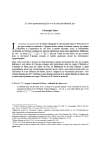
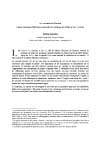
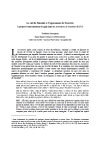
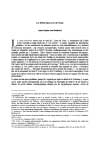
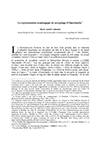
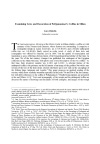





















 Contact
Contact
 Abonnez-vous !
Abonnez-vous ! Équipe Égypte Nilotique et Méditerranéenne
Équipe Égypte Nilotique et Méditerranéenne UMR 5140 « Archéologie des Sociétés Méditerranéennes » (Cnrs)
UMR 5140 « Archéologie des Sociétés Méditerranéennes » (Cnrs) Université Paul Valéry - Montpellier III
Université Paul Valéry - Montpellier III